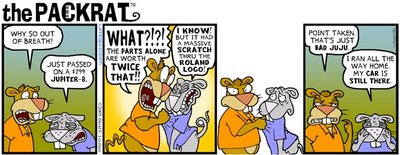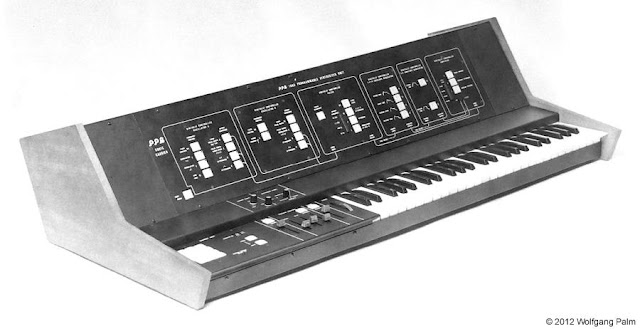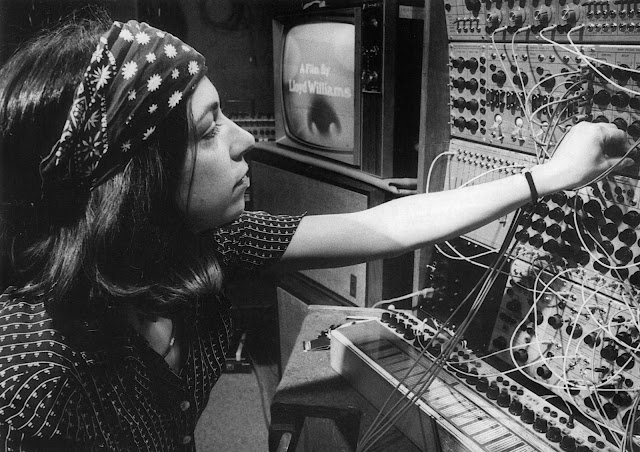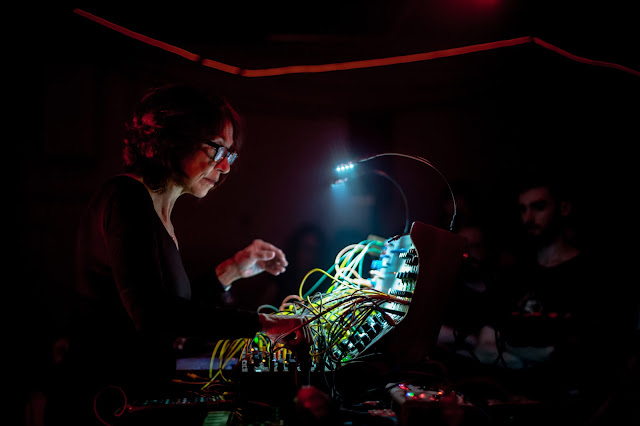
Dave of
umop.com and
The Packrat sent an email on a synth dream he had, to me and a couple of others. I replied with my own. Dave and
Peter Forrest thought they were a good read so I figured I'd put up a post. Dave gave me the go ahead to start with his. If you have any similar stories, feel free to post them in the comments. I thought this particular Packrat Toon held a little bit of truth to the experience behind the dreams. BTW, title link takes you to the rest of The Packrat strip. Hmm... Now that I think of it, all the toons would make for great dreams. : ) Click the image to read it.
Before we start. Question: How many of you realized it was a dream in the middle of it and actually tried to take it back to the other side? I have.
Via Dave:
"Not for nuthin', but after I bought some office furniture at Ikea the
other day, I guess the store invaded & scrambled my thoughts, because
I dreamed I bought a little 2-osc analog synth from them.
I'd supply a picture but it was so nondescript it doesn't really
matter. It was about half a MaxiKorg with similarly colored switches;
plain black cheapo plastic body. Mixer faders all the way over on the
side, embedded in the end cheeks like an OB-Xa retrofit (for only two
VCO's?... there were so many faders...); and of course those cheeks
were Ikea's specialty "birch effect" particle board in composition.
One other detail I remember is the waveform knob was a simple knob
which went from brass (saw) to EP (electric piano [??]). When cranked
all the way left, this thing sounded fatter than the brass from ELP's
"Touch and Go" and I recall remarking to my girlfriend in the dream
(who was naked of course...TMI?) that I planned on bringing this
little $199 beauty out with me to Pong* shows as a dedicated brass
synth.
The name? "Ikeaboard" of course.
Just thought I'd share. It's weird to have dreams with this many
technical details skirting so close to the realistic."
############################################################################
Via Matrix:
"Too funny, I used to have synth dreams all the time. There was a time in
real life, where I was hitting up pawn shop after pawn shop looking for
"that deal." I had major GAS. At that time I'd have dreams about shops in
various cities with crazy analog gear I've never seen before. Bizarre
Roland/Oberheim combo analogs. The shops always seemed to have mini lofts
in the back where they stored a bunch of dusty old analogs. I have
re-occuring dreams about making rounds through pawn shops on Santa Monica
Blvd. in LA between Van Ness and Western, which I just realized there isn't
a single pawn shop in that stretch if I remember correctly, and rounds in a
downtown that's a mix between LA, Venice Beach, and Seattle. The most
memorable synth of all things was a Red SH-101 that was shiny and had curves
which slanted in by the keys. Imagine a shiny red SH-101 designed by
Ferarri and you'll get the idea.
Here's a couple of real life experiences similar to my synth dreams:
1) I used to go up to Vancouver B.C. about twice a year and run through this
routine:
1. Check-in at hotel.
2. Walk out and down one side of Granville Ave hitting every pawn shop on
the way to the liqour store (mostly avoiding eye contact with the porn shop
displays in between - Granville basically has pawn shops, porn shops, clubs,
and convenience stores with .99 pizza by the slice). And then walk back up
the other, hitting all the pawn shops on that side.
3. Buy a synth if I was lucky enough to find one (I bought my JD-800 for
$650 Canadian there)
4. Bring it and the drinks up to the hotel room, and go through my cleaning
ritual while drinking these Canadian berry flavored drinks with MuchTV
(Canadian MTV) in the background (my wife liked that show when we visited).
I'd also watch life go by out on Granville. I always got a second to third
story room with a view of the street. I'd spend about an hour clianing the
synth and then play a bit and head out for the night. Back from the night
I'd stare out the window and watch the craziness that happens when people
start leaving the clubs. The whole time I'd be glowing and thinking about
how cool it was that I actually found something. There was a Kurzweil
K2000S I was eyeing in a shop for a while, but I thought the asking price at
$800 or so Canadian was too much for it to be a deal. Visiting Granville
was my pawnshop dream in real life minus of course the mass cool gear, but I
usually found something interesting too look at if not buy. I'd always go
up for my birthday as well, so finding something on that trip was always
better.
2) I went to Maui once, and made a point to hit the pawn shops at some
point. I didn't get around to it until the last day. To my wife's
reluctance, we hit shop after shop and found nothing. We burned out and
gave up. On the way back to the hotel, my wife spots Taco Bell. We go in
and I see a pawn shop around back. I say just one more. She's says no, but
I pull the what if that's the pawn shop that has the $50 Minimoog?! She
gives in. I walk in and in the back I see what looks like either a TR-707
or 909. I figure of course it's the 707 with my luck. I get closer and
it's pretty dusty, and... It's the 909. I get that sick feeling in the
stomache, that feeling of panic like someone or something is going to go
wrong. I grab it and look at a sticker on it. It says 220, but no $. I
ask the guy working there if that's the price. Turns out he's the owner and
he says a little nervously, "oh..., we can take $30 off of that" A 909 for
$190! I say sold! But... He only takes cash. I have no cash and he is
about to close! He's in a hurry to go see some blockbuster that just came
out. The shop opens again after my plane leaves. I ask if there is an ATM
close by. There is one across a high speed highway. but he says I better
hurry because he needs to make the movie and will not wait. What do I do?
I bolt across the street. I manage to withdraw the money and run back just
as he's locking the shop. I get that sick feeling like I knew it was too
good to happen, but... he has the 909 in hand and I make my purchase. : )
Only... They didn't have any 1/4" cables for me to try it, and as he was in
a rush, I had to buy it hoping it was ok. I almost didn't get it but I
figured I could get it repaired at that price, so I'm hoping it's just not
too bad. I get back and plug it in. I hear it thumping away. Big grin.
; ) I clean it up and it's immaculate, no issues whatsoever."






















































